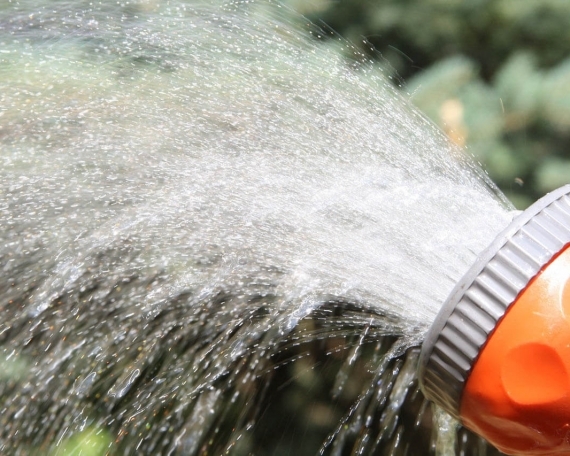THIS CASE STUDY SHOWS THE APPLICATION OF KEY LEGISLATIVE REQUIREMENTS FOR QUALIFYING R&D ACTIVITIES AS THEY APPLY TO RELEVANT ACTIVITIES IN THE FARMING INDUSTRY.
BUSINESS SCENARIO
Nut & Co. was started in 1988 to design and build equipment to fulfill the needs of the pecan grower and sheller.
The owner of Nut & Co. began his pecan career in 1972. Since the very first day an effort to help build the industry stronger has always been in the forefront of the company. Designing and manufacturing high-quality, reliable equipment has helped build a company that each year continues to be a leader in the industry.
Nut & Co. incurred qualified research expenses relating to the design and development of various cultivation, support, processing and separation equipment during the 2013-2016 fiscal years. Its biggest R&D project was the development of the Aspirator System.
The Aspirator System was designed in 2012 to fit both small and larger shellers. At the time, the industry used blowers to separate shell from pecan meat. This process was inefficient and produced a lot of dust within the plant. The aspirator system was designed to use suction methods instead of blowing. This kept the plant clean and accomplished the remarkable task of removing the shell from the pecan meat.
In order to qualify for the Research and Development Tax Credit, Nut & Co. needed to determine the eligibility of its proposed R&D activities. Nut & Co. had to make sure its activities met the following criteria:
- Be in the field of science or technology
- Involve one or more of these categories of R&D:
- Basic research
- Applied research
- Experimental development
- Seek to make scientific or technological advancement
- Involve the resolution of scientific or technological uncertainty.
Nut & Co.’s qualified R&D activities included the following:
ELIGIBLE R&D ACTIVITIES
Design and development of a series of prototypes to achieve the technical objectives (design of the aspirator system).
Nut & Co.’s hypothesis for this activity stated that it was possible to develop a revolutionary piece of shelling equipment that could remove the meat from the pecan shell by using a suction method instead of the normal blowing method.
The experiments that Nut & Co. conducted in the design phase predominantly entailed conceptual engineering drawings, mathematical calculations and testing of different materials. These experiments could only be proven effective or ineffective in the prototype development and testing phase. Following the experiments in that phase, during which the product was built and tested in various applications, the design was modified and retested until the desired outcome was achieved.
Trials and analysis of data to achieve results that can be reproduced to a satisfactory standard (development and testing of the aspirator system).
The main objective for this activity stated that with improved knowledge of the intrinsic factors related to the extraction of pecans from their shells, it was possible to identify mechanisms for improving the current shelling process.
Details of this experiment included testing of different materials ultimately concluding that stainless steel wasp, off-fall tanks and galvanized piping needed to be used for the system to ensure efficiency, accuracy and safety.
Background research to evaluate current knowledge gaps and determine feasibility (background research of the development of the aspirator system).
Prior to 2013, the shelling equipment existing on the market was cumbersome and expensive. Thus, besides the lack of comparable solutions available, the outcomes of activities in this research could not have been known or determined in advance due to a number of specific technical challenges.
Nut & Co.’s eligible R&D activities during this phase of experimentation included:
- Literature search and review, including maintaining up-to-date knowledge on relevant certification and standards.
- Consultation with industry professionals and potential customers to determine the level of interest and commercial feasibility of the product.
- Preliminary equipment and resources review with respect to capacity, performance and suitability for the project.
- Consultation with key component/part/assembly suppliers to determine the factors they considered important in the design and to gain an understanding of how the design needed to be structured accordingly.
The background research conducted by Nut & Co. was directly related to the main objective of designing the aspirator system, therefore qualifying as R&D.
Ongoing analysis of customer or user feedback to improve the prototype design (feedback R&D of the aspirator system).
Nut & Co.’s eligible R&D activities for this phase of its project included:
- Ongoing analysis and testing to improve the efficiency and safety of the product.
- Ongoing development and modification to interpret the experimental results and draw conclusions that served as starting points for the development of new hypotheses.
- Commercial analysis and functionality review.
These activities were necessary to evaluate the performance capabilities of the new design in the field and to improve any flaws in the design, therefore qualifying as R&D.
WHAT RECORDS AND SPECIFIC DOCUMENTATION DID NUT & CO. KEEP?
Similar to any tax credit or deduction, Nut & Co. had to save business records that outlined what it did in its R&D activities, including experimental activities and documents to prove that the work took place in a systematic manner. Nut & Co. saved the following documentation:
- Project records/ lab notes
- Innovation Log
- Conceptual sketches
- Design drawings
- Background research
- Records of changes
- Testing protocols
- Results of records of analysis from testing/trial runs
- Records of resource allocation/usage logs
- Staff time sheets
- Invoices
- Receipts
By having these records on file, Nut & Co. confirmed that it was “compliance ready” — meaning if it was audited by Revenue, it could present documentation to show the progression of its R&D work, ultimately proving its R&D eligibility.
R&D TAX INCENTIVE SUMMARY
Nut & Co. shows continuous improvements through research and development in the following areas:
- Improvements to production time and efficiency
- Improvements in reliability of products
- Decrease in labor and production costs
- Production innovation sourced from:
- Internal ideas
- Existing customers who have business needs which require new solutions
Nut & Co. eliminated uncertainty by:
- Testing across all supported releases to determine reliability and user-friendliness
- Experimentation with possible fixes until an adequate solution was determined
Therefore, Nut & Co. qualifies for the research and development tax credit.









